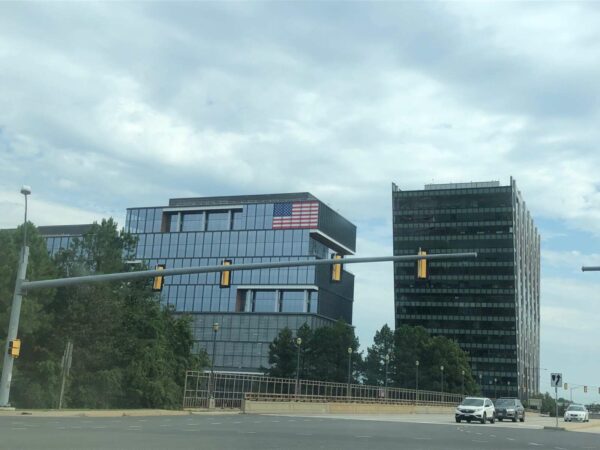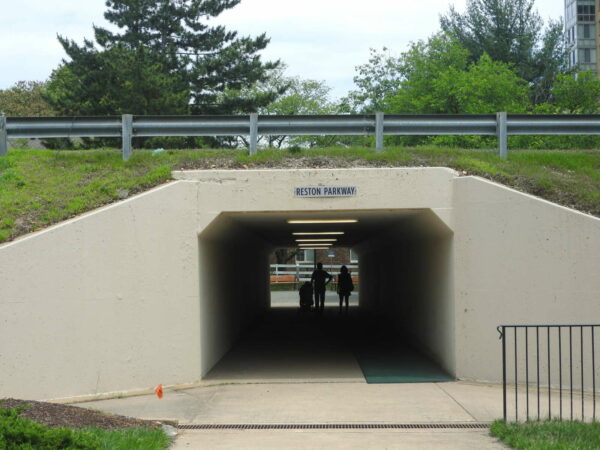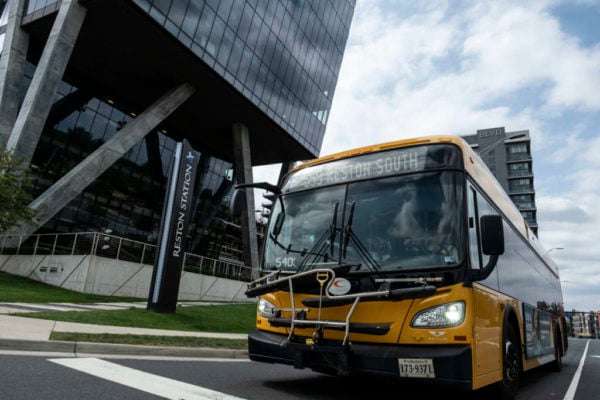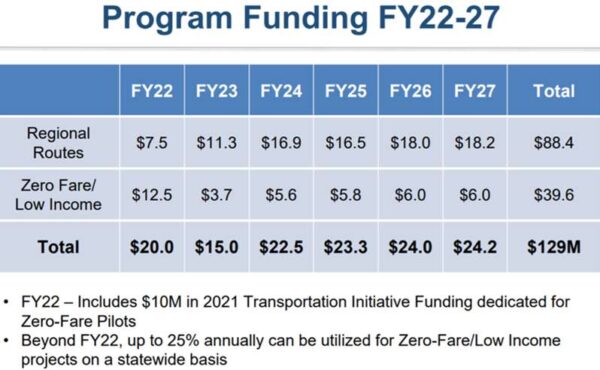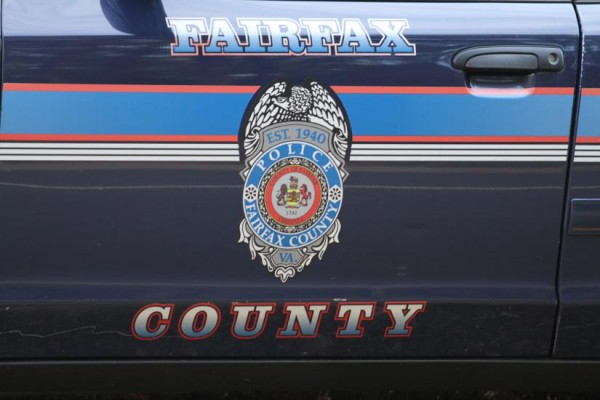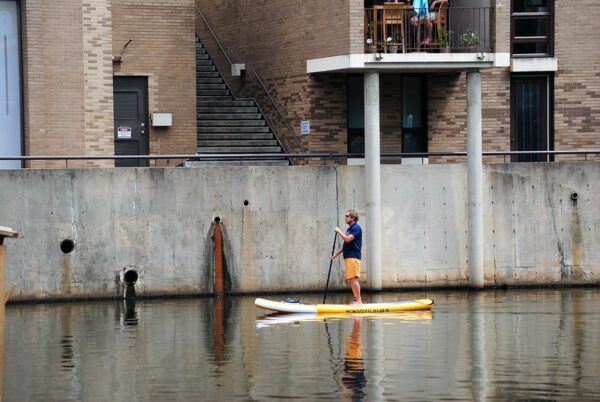
Metro Service Changes Start This Weekend — “Starting Sunday, Metro says riders will notice big changes when it comes to price and how often buses and trains come. The changes are part of an effort by Metro to lure back riders, something it has struggled to do during the pandemic. General manager Paul Wiedefeld tells 7News bus ridership is only about 55% what it was pre-pandemic, and rail is just 25% of what it once was.” [ABC7 News]
Fairfax County Firefighters Assist with Ida Response — A 16-person water rescue team with the Fairfax County Fire and Rescue Department’s Virginia Task Force 1 Urban Search and Rescue Team was activated by FEMA yesterday (Thursday) in response to the impact of Hurricane Ida remnants in the Northeast. The task force recently returned from Haiti after the island was devastated by an earthquake. [VATF1/Twitter]
Virginia No Longer Worst State for Workers — “Conditions for workers in Virginia have improved considerably since Democrats took control of the commonwealth’s General Assembly in 2019, according to a new assessment by anti-poverty organization Oxfam America. Oxfam ranked Virginia the ‘worst state for workers’ in 2018 and 2019…but [it] leapt to #23 in the organization’s 2021 rankings, released Wednesday.” [DCist]
Lights Festival Coming to Roer’s Zoofari — “Beginning on October 15, Roer’s Zoofari will host a very different collection of animals from its typical apes and reptiles line-up. Come embrace our post-reality reality with unicorns and dinosaurs at LuminoCity Festival, a paid-admission, outdoor display of light art. The concept is simple: thousands of giant, light-up figures and environments that you walk around and look at, at night.” [Northern Virginia Magazine]
Photo via vantagehill/Flickr
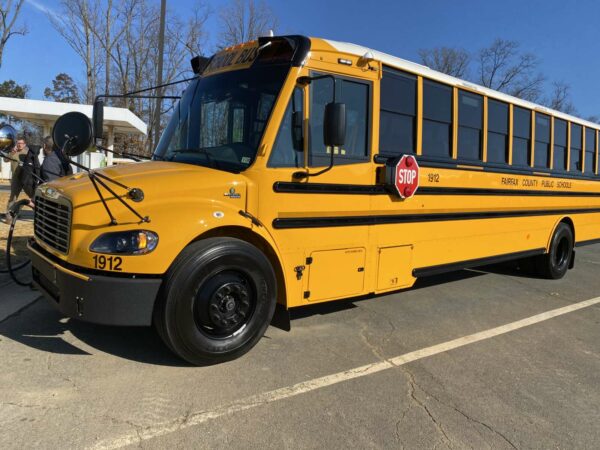
Fairfax County Public Schools will soon add another 10 electric school buses to its fleet, thanks to a new $2.65 million state grant.
19 school districts, including FCPS, will collectively receive more than $10 million in the latest round of allocations from Virginia’s Volkswagen Environmental Mitigation Trust — enough to replace 83 diesel school buses with electric and propane-fueled vehicles, Gov. Ralph Northam announced last Wednesday (Aug. 19).
“Virginia’s investments in electrifying the school bus fleets is an important and critical part of our comprehensive approach to reducing pollution,” Virginia Department of Environmental Quality Director David Paylor said in the news release. “Collectively, the replacement of these school buses is calculated to reduce carbon dioxide emissions by 10,000 tons per year, and will save one million gallons of diesel fuel, equivalent to removing 2,000 cars from the road.”
Administered by Department of Environmental Quality, the Volkswagen trust comes from Virginia’s $93.6 million share of the $2.7 billion settlement that the automobile manufacturer agreed to in 2016 after violating the Clean Air Act by cheating vehicle emissions tests.
Virginia announced the first round of funding from the trust on May 7, awarding over $9.4 million to help local governments purchase electric vehicles for their fleets. Fairfax County got more than $4 million for shuttle buses, waste and recycling trucks, and a truck for its public library system.
FCPS currently has eight electric buses that were placed in service this past May. The first bus arrived in January as part of a pilot program developed by Dominion Energy, which rolled out 50 buses across the state with plans to replace all diesel school buses with electric ones by 2030.
However, the future of Fairfax County’s transition to electric school buses has become a little hazier after the Virginia House of Delegates rejected an expansion of Dominion’s program that would’ve added 1,000 more electric school buses, a sign of legislators’ growing wariness of the utility company’s influence.
During its spring special session, the General Assembly voted to create an Electric Vehicle Grant Fund to help with the costs of adding electric school buses. Northam signed the bill into law, but the program has no funding yet.
Dominion confirmed that the newly awarded DEQ grants are unrelated to its program, which covered the difference in cost of an electric bus versus a diesel one as well as the cost and installation of charging stations.
“Children deserve clean transportation to school and we’re excited to see Virginia moving that way,” Dominion spokesperson Peggy Fox said. “The goal with our innovative program was to accelerate the adoption of electric school buses, so we’re thrilled to see more of these clean-running buses with zero emissions rolling out across Virginia.”
The utility says it is still offering to install charging stations for school districts for free in exchange for the ability to return stored energy back into the electric grid when the buses are idle and the chance to buy the bus batteries after the vehicles pass their life span.
“We will be involved if schools systems chose so,” Fox said in an email.
FCPS says its transportation department “continues to evaluate” its existing electric buses and work with vendor Thomas Built Buses to make adjustments.
While shifting to electric buses is expected to reduce operational and maintenance costs in the long run, the district’s transition is currently limited by the availability of funding and charging infrastructure, which affects where the buses can be assigned.
“As more funding opportunities become available, as the technology is refined for school division needs, and as charging infrastructure becomes readily available, FCPS plans to transition its fleet of 1,625 buses to electric,” FCPS spokesperson Julie Moult said by email.
The 10 new buses funded by the DEQ grant are scheduled to arrive in March 2022.
“Operation and maintenance of the electric buses are being monitored and evaluated for efficiency of operation and cost savings,” Moult said.
Fairfax County Kids Return to School — “We are back, ready to experience all the great things that come with learning together, five days a week in person. We can’t wait to see our students arrive at school…Show off that first-day excitement by posting photos to your favorite social media site and tagging them with #FirstDayFairfax and #FCPSReturningStrong.” [FCPS]
MWAA Proposes New Tech on Dulles Toll Road — “The Metropolitan Washington Airports Authority wants to add digital signs and closed-circuit monitoring technology along the Dulles Toll Road. The airports authority is looking for a contractor to build the infrastructure and install an intelligent transportation system — which would include six dynamic message signs and 15 closed-circuit television installations — along the widely-used commuter route.” [Washington Business Journal]
W&OD Trail Near Wiehle Reopens After Utility Work — The Washington & Old Dominion Trail has reopened east of Wiehle Avenue in Reston after closing earlier this summer so Dominion Energy could relocate overhead electric transmission lines. The utility work was necessary to prepare the site for construction on a pedestrian bridge over Wiehle that’s expected to begin next summer. [The W&OD Trail/Twitter]
Virginia Leads in Rent Relief Funding After Past Stumbles — “From January through May, Virginia distributed more dollars than any other state from the first round of the Emergency Rental Assistance Program, according to U.S. Treasury figures. By the end of June, Virginia ranked second only to Texas…As of late July, Virginia has spent more than $335 million in rental relief funds and assisted more than 51,000 households, according to state figures.” [Associated Press/WTOP]

Metro Changes Coming Next Month — A host of service changes, including more rail and bus service, longer hours, free bus transfers, and a flat $2, one-way train fare on weekends, will take effect starting on Sept. 5. Approved by Metro’s board of governors in June, the alterations are intended to lure riders back as students return to school and more white-collar workers return to offices. [WTOP]
Virginia Prepares to Welcome Afghan Refugees — Gov. Ralph Northam said on Twitter yesterday that he is coordinating with the federal government to accept “thousands more” Afghan citizens and their families at Fort Lee. 8,650 refugees from Afghanistan have settled in Virginia over the past six years. [DCist]
NoVA Fine Arts Festival Roster Revealed — The Northern Virginia Fine Arts Festival has unveiled a lineup of more than 200 artists who will compete in 10 categories from Sept. 10-12 at Reston Town Center. After last year’s cancellation, this year’s festival will have several health precautions in place, including hand sanitation stations, vaccination requirements for volunteers, and encouragement of social distancing and face mask-wearing in artist booths. [Tephra ICA]
Photo via vantagehill/Flickr
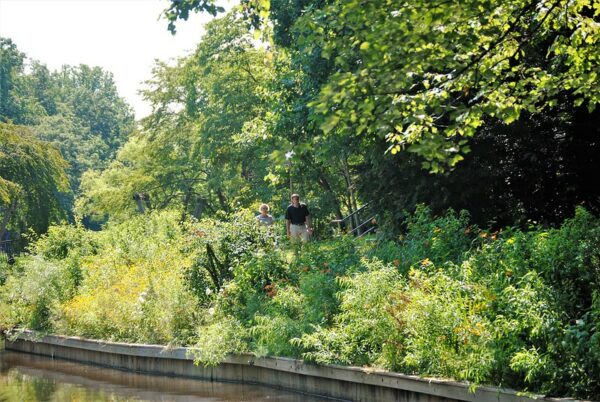
Former Herndon Resident Charged in Old Sex Assaults — “A 48-year-old Winchester man has been charged with six felonies for sexual assaults that occurred between 1999 and 2001. Detectives began their investigation in May after a victim disclosed the unlawful sexual contact occurring in 2001. Detectives determined Rigoberto Garcia Nolasco resided in the 13300 block of Schwenger Place in Herndon where he provided piano lessons to the victim.” [FCPD]
Faulty Wiring Causes Reston Building Fire — The Fairfax County Fire and Rescue Department responded to a building fire in the 12000 block of Sunset Hills Road early Friday morning (July 23) that started “in the wiring of a small, under the cabinet style refrigeration unit” and caused an estimated $1,000 in damages. The fire was contained by two sprinklers inside the building and quickly extinguished upon firefighters’ arrival. [Patch]
Tenant of Missing Lorton Woman Charged — “Fairfax County police say they have found the body of 72-year-old Emily Lu, 50 days after she disappeared following a trip to a grocery store, and officers have arrested a man who lived with her…Brian George Sayrs, Jr., 25, of Woodbridge, was arrested and faces a charge of second-degree murder, News4’s Shomari Stone was first to report. Sayrs is also charged with felony concealment of a body.” [NBC4]
Learn the History of “Virginia Is for Lovers” — “Perhaps you’ve heard of ‘Virginia is for lovers.’ That is surely one of the most memorable tourism slogans in history, despite the fact that it’s hard to pin down exactly what it means. The slogan debuted in 1969 but our story actually begins a couple of years earlier, when Richmond ad agency Martin & Woltz was invited to pitch for the state’s travel promotion account.” [The Washington Post]
Photo via vantagehill/Flickr
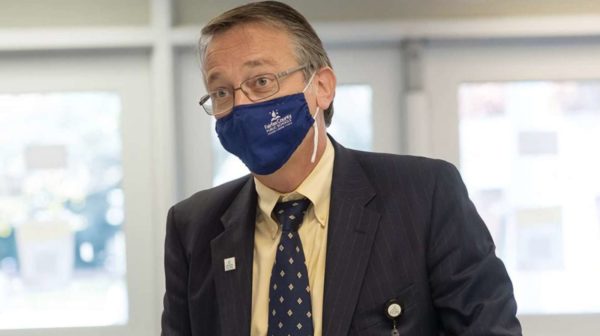
Virginia school districts will make their own rules regarding masking requirements for the upcoming school year, the state’s education and health departments announced today (Wednesday).
The Commonwealth will let a public health order that’s in effect until Sunday (July 25) expire, thereby ending a statewide mandate that kids over age 5 wear masks indoors at public and private schools and putting decisions in the hands of local officials.
“The science is clear that vaccinations and masks help keep our communities safe from COVID-19,” Secretary of Health and Human Resources Dr. Daniel Carey said in a statement. “The Commonwealth’s children and the individuals that help them learn will be protected by proven strategies, without a one-size-fits-all approach.”
Fairfax County Public Schools currently requires masks to be worn indoors for students, staff, and visitors when school is in session “until more students aged 12 and older are fully vaccinated and until younger students become eligible for vaccination.”
“We are reviewing the guidance and reaching out to hear from our community, and will share a plan early next week with staff and families,” FCPS spokesperson Julie Moult said in a statement.
Virginia’s new guidance says elementary schools should require students, teachers, and staff to wear masks indoors, regardless of vaccination status, until vaccines are available for young children. For middle and high schools, it recommends that students, teachers, and staff who are not fully vaccinated be required to wear masks indoors.
State officials said the change will allow districts to make their own decisions and the switch reflects changes by the Centers for Disease Control and Prevention, which loosened its guidance earlier this month and advised that masks should be worn indoors by all individuals age 2 and older who are not fully vaccinated.
The American Academy of Pediatrics, by contrast, recommends that, unless they are unable to do so due to medical or developmental challenges, all school staff and students over the age of 2 should wear masks at school, even if they’re vaccinated.
The changes come as daily COVID-19 cases have increased in Virginia and the U.S., and the especially contagious delta variant now represents 83% of new coronavirus cases in the U.S., according to a CDC estimate.
Over 70% of students ages 12 to 17 in Fairfax County have been vaccinated. COVID-19 vaccines for those under the age of 12 are not yet authorized but currently undergoing trials.
The CDC has said that most students, including those with disabilities, can tolerate and safely wear a mask, but a “narrow subset of students with disabilities” may be unable to do so and should not be required to wear one.
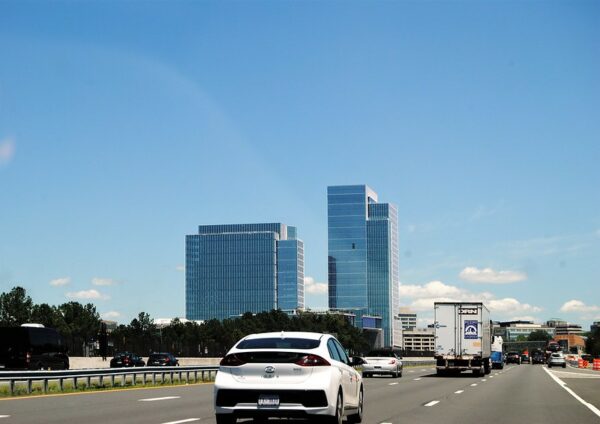
Virginia is reconsidering the future of funding for transportation infrastructure, as the rise of electric and more fuel-efficient vehicles has cut into the gas tax revenue that helps pay for those projects.
One option the Commonwealth has started pursuing is a “mileage-based user fee” that drivers would pay depending on how much or little they travel. Drivers could opt into the voluntary system in lieu of paying a mandatory highway user fee that first took effect on July 1, 2020.
State Sen. Janet Howell (D-32nd District) says the highway use fee — which applies to cars that average at least 25 miles per gallon and is calculated based on the fuels tax at the time of a vehicle’s registration and the average number of miles it travels in the state — is a precursor to Virginia’s planned mileage-based user fee program.
“For most of the past decade, Virginia, like the rest of the country, has been wrestling with the challenge of identifying the best approach to generating sufficient revenues to support transportation investments,” she said in a statement. “As cars have become more fuel efficient and electric vehicle adoption increases, it is increasingly difficult to strike the right balance of raising adequate revenues from traditional sources and adhering to a usage-based philosophy of highway financing.”
The Virginia Department of Motor Vehicles is currently fielding requests from private contractors to operate the program, which it anticipates rolling out in July 2022. Led by the DMV, a workgroup tasked with developing the program is slated to deliver an interim report to the Commonwealth this December.
The working group is identifying all requirements to Virginia’s mileage-based user fee program with “a priority on consumer privacy protection and equity,” DMV spokesperson Jessica Cowardin said in a statement.
Seeking new ways to fund road repairs and transit projects, Virginia established the mileage-based fee program in April 2020 when the General Assembly adopted a major transportation bill that also established the highway use fee and raised gas taxes for the first time in more than three decades.
The bill also lowered vehicle registration fees by $10 and repealed an annual $64 fee for electric and alternative fuel vehicles.
The changes, which include tying the gas tax rate to the Consumer Price Index to keep up with inflation starting next year, will help Virginia diversify its funding sources to offset stagnant or declining gas tax revenue, state legislators say.
The consultant KPMG previously estimated that Virginia would lose nearly 33% of its gas tax revenues by 2030 due to fuel efficiency, or approximately $260 million.
“Neither the [Highway Use Fee] nor the EV Registration fee are intended to suppress the sales of fuel efficient or electric vehicles, but simply recapture the average annual revenue from the foregone gas taxes,” Howell said.
The idea of taxing drivers based on how much they travel instead of the fuel they use has been gaining traction throughout the U.S. over the past decade.
Despite inflation, the federal gas tax rate has been locked in at 18.4 cents per gallon since it went up from 14.1 cents in 1993, meaning there’s less money to fund highway improvements.
“Many cars are not using gas at all, such as electric, so that system of highway finance has been coming apart for a long time,” said Jonathan Gifford, director of George Mason University’s Center for Transportation Public-Private Partnership Policy in Arlington.
If Virginia wants to encourage a transition to clean energy and electric vehicles, which “is absolutely essential to addressing climate change, we will need to look to other options” to pay for transportation projects, Northern Virginia Transportation Alliance President Jason Stanford says. Read More
Metro Reports Pandemic Ridership High for Fourth of July — “The transit agency said it saw a pandemic-record high ridership during the [Independence Day] holiday. As of 10 p.m. Sunday, about 174,000 trips were taken on the rail system, Metro tweeted Sunday night. That’s the highest single-day ridership since the beginning of the coronavirus pandemic.” [WTOP]
Man Arrested for Attempted Robbery in Reston — “Officers from the Reston District Station of the Fairfax County Police arrested a Centreville man Thursday [July 1] in connection with an attempted robbery in Reston…The victim returned to his car, which was parked near the intersection of Clubhouse Road and North Shore Drive around 4:53 a.m., when he found a man rummaging around inside it, police say.” [Patch]
Leidos Offers Employees a Year’s Pay to Get COVID-19 Vaccine — In an effort to counter slowing inoculation rates, the Reston-based information technology contractor has set aside $1 million to give 10 randomly selected employees a year’s worth of pay if they get the COVID-19 vaccine. Eight Leidos workers have died from the virus, including one D.C. area resident. [The Washington Post]
Virginia’s Death Row Officially Vacant — “With the death penalty formally abolished in Virginia as of this week, death row is now officially vacant, according to prison officials. Department of Corrections spokeswoman Lisa Kinney said the two remaining prisoners facing death sentences were moved off death row after the legislation was signed earlier this year.” [Virginia Mercury]
Fairfax Connector suspended fare collections last year as a temporary health measure in response to the COVID-19 pandemic, but the public bus system is considering longer-term adjustments to its fare policies with support from a new state grant program.
The Fairfax County Department of Transportation is one of 12 transit agencies in Virginia that have expressed interest in the Department of Rail and Public Transportation’s new Transit Ridership Incentive Program (TRIP), which will fund projects that increase connectivity in highly populated areas or remove barriers for low-income individuals by reducing or eliminating fares.
While fare collection resumed on Jan. 4, county leaders see reducing or subsidizing trip costs as one way to encourage more people to ride the Connector, which is the largest local bus system in Northern Virginia, transporting approximately 30,000 passengers on 91 routes in ordinary times.
“Access to transit is crucial in promoting equity county-wide and for many a barrier is cost,” Fairfax County Board of Supervisors Jeff McKay said. “Our Department of Transportation is committed to looking into how we can provide aid to those experiencing economic hardship.”
Created by the General Assembly during its 2020 session, TRIP was conceived before the novel coronavirus arrived in the U.S., but Virginia Transportation Secretary Shannon Valentine told the Commonwealth Transportation Board during a May 18 workshop that the pandemic illustrated how vital public transportation is for essential workers, DCist reported.
“Fares turned out to be an obstacle. So we are really trying to use this as an opportunity,” Valentine said, according to DCist.
DRPT has split TRIP into two programs: one focused on regional connectivity, which could include everything from integrated fare collection systems to the creation of bus-only lanes on significant routes, and one focused on reducing the impact of fares on low-income users, which could involve eliminating fares, creating zero-fare zones, or providing subsidized or free passes.
Virginia has allocated a total of $129 million to the TRIP initiative through fiscal year 2027, including $88.4 million for the connectivity program and $39.6 million for the fare program, according to a presentation that DRPT delivered to the Commonwealth Transportation Board.
Legislators limited the fare reduction program to 25% of the initiative’s annual funding, but the General Assembly gave the program an additional $10 million in the state’s fiscal year 2022 budget, raising its total to $12.5 million for the upcoming fiscal year, which begins on July 1.
DRPT released a draft policy last week outlining how TRIP will be implemented, including how projects will be evaluated for grant funds. The resolution is open for public input through June 18, and the CTB is scheduled to vote on it on June 23.
The department has also made a draft of the program’s application guidelines available for public comment until July 7. Read More
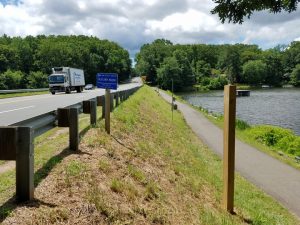
Conversations are underway to improve the safety of Lake Anne Dam, which currently does not meet state regulations for handling the largest flood considered when evaluating the dam’s performance.
The state’s Department of Conservations and Floodpain Management has called on Reston. Association, which owns the high-hazard dam, to submit an alteration permit application to increase the spillway capacity so it can manage a high-intensity flood, which is known as the Spillway Design Flood (SDF).
In a letter issued to RA on March 20, Russel Baxter, deputy director of dam safety and floodplain management and water conservation, told RA to submit the alteration permit by Dec. 31.
Construction work to boost the dam’s spillway capacity should be completed by the end of. 2021, according to the letter.
So far, RA has been issued a Conditional Operation and Maintenance Certificate because the dam currently does not meet state regulations. The certificate expires on March 31, 2022. RA has previously received conditional operation certificates as well.
But it’s unclear exactly how alterations would be phased out. Talks are underway to update the state’s dam regulations.
This year, RA’s Board of Directors deferred around $750,000 in funding to accommodate other pending projects in the fiscal year 2021 budget.
Larry Butler, RA’s Chief Operating Officer, told Reston Now that the association is waiting on the state to complete to determine what changes are made to state codes and regulations regarding dams and impounding structure.
“We have no alteration plans at present because we do not know how the code will change,” Butler wrote in a statement.
When the board met last month, RA’s CEO Hank Lynch noted that the state is working on seating a Technical Advisory Committee to review dam safety regulations. Lynch said that many dam owners have expressed concerns about “recent changes to the regulations and the owners’ inabilities to satisfy the requirements, both technically and financially.”
“This action has been delayed because of the pandemic,” Lynch noted.
It can take around two years for the committee to complete its work, which prompted staff to delay any capital funding until new guidance is in place.
In 2017, the state agreed to foot half of the $14,590 bill for a hazard analysis of the dam. High-hazard dams pose the greatest risk to life and property if they fail.
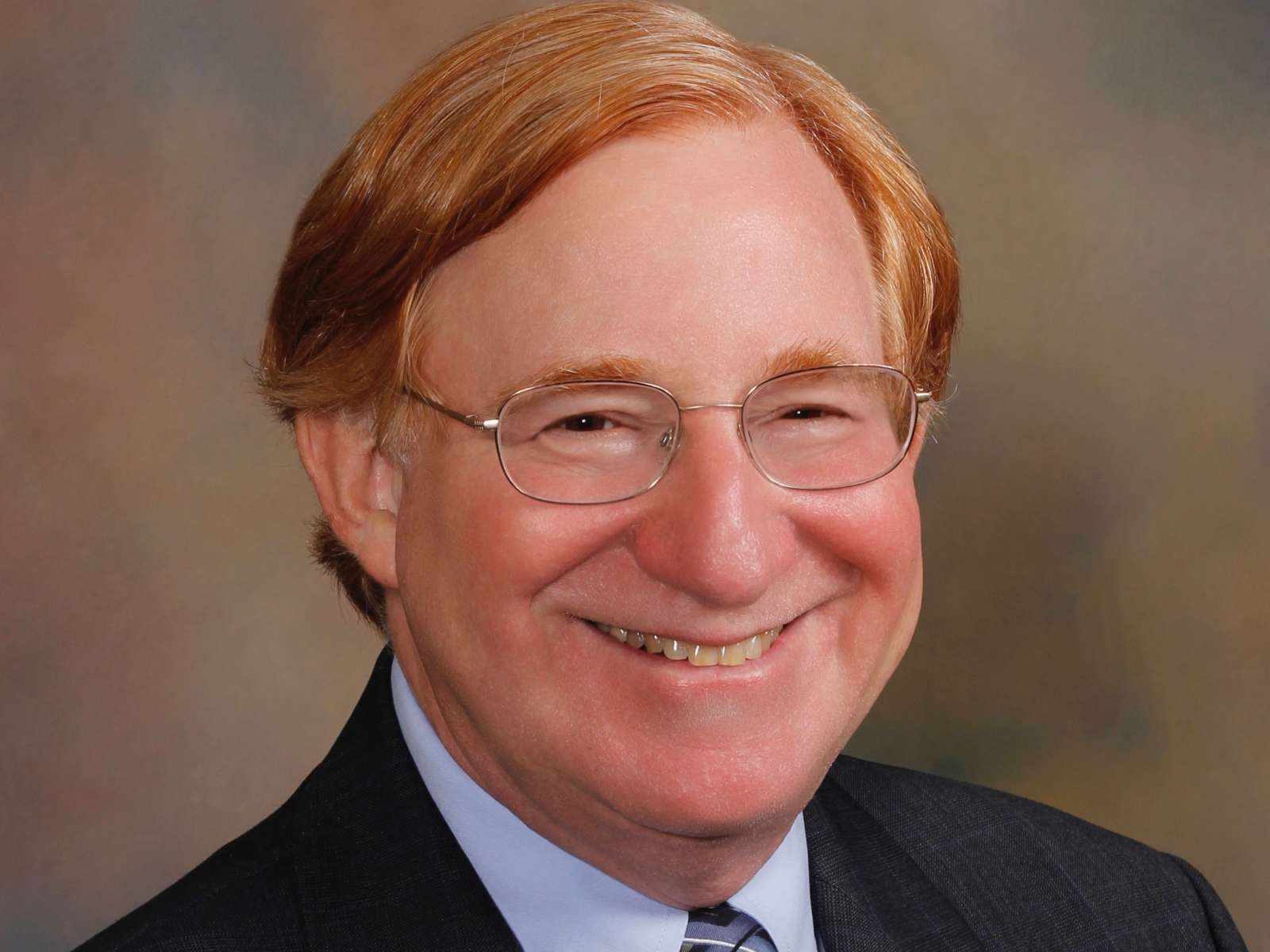
The Virginia State Bar president-elect for 2020-2021 is Jay B. Myerson of Reston.
Myerson is set to serve as president in 2021-2022, and is succeeding Brian L. Buvia, the current president of the VSB. Myerson will assume the president-elect position on July 1 and is the first attorney whose law firm is based in Reston to serve in this statewide capacity, according to a statement from The Myerson Law Group.
The VSB is an administrative agency of the Supreme Court of Virginia, and the president regulates and supports more than 50,000 Virginia lawyers, according to the statement.
“It will be a real privilege to work with the many talented attorneys across the Commonwealth,” said Myerson.
Myerson graduated from Georgetown University and Georgetown University Law Center. From there, he founded The Myerson Law Group, P.C. where he supervises a six-attorney domestic, criminal and civil litigation practice, said the statement. The practice is located in Fairfax County.
Myerson is a five-time recipient of the Fairfax Bar Association’s President’s Award and was the 2018 recipient of the Local Bar Leader Award. He was past president of the FBA, where he led efforts for judicial funding, according to the statement.
The attorney was also elected to the state Bar Council in 2014, just completing his second term. He has also served for the American Bar Association’s House of Delegates.
Myerson and his family are longtime Reston residents.
“I’m especially looking forward to working with the wonderful VSB staff, the Chief Justice and other justices on Virginia’s Supreme Court,” said Myerson.
Photo courtesy of The Myerson Law Group, P.C.
 This is an opinion column by Del. Ken Plum (D), who represents Reston in Virginia’s House of Delegates. It does not reflect the opinion of Reston Now.
This is an opinion column by Del. Ken Plum (D), who represents Reston in Virginia’s House of Delegates. It does not reflect the opinion of Reston Now.
With the outcomes of the elections in 2019 Virginia may be considered by some to be in an altered state. While the flipping of the legislature from red to blue will have consequences, actual proposed changes will not be known until campaign rhetoric is translated into legislative languages, a multitude of interest groups and individuals have weighed in, and the level of political will for significant change can be measured by votes in legislative committees and on the floors of the House and Senate. Readers of this column will be getting steady reports over the next weeks and months following the beginning of the next 400 years of the Commonwealth.
In the meantime, it is helpful to step back as much as that is possible and to closely examine where we are today as a baseline in moving forward. The Commonwealth is a wealthy state–twelfth wealthiest among the states. That is not common wealth however. Three regions of Virginia that make up the Golden Crescent from Northern Virginia through Tidewater exceed U.S. per capita income. Northern Virginia jurisdictions have a per capita income level greater than Connecticut which is the highest in the nation. At the same time, three regions of Virginia in Southwest and Southside have per capita income less than Mississippi, the poorest state in the country. Parts of Virginia are the wealthiest while other parts are the poorest in the United States. Even with its great diversity in income Virginia continues to have the lowest state minimum wage in the country at $7.25 which had it simply kept up with inflation would be $10.54.
Virginia is certainly not unique among the states in having broad differences in growth rates and wealth within its boundaries. There are many factors that create differences. From a public policy perspective, it is important that Virginia be viewed in its uncommon aspects as well as generalized as a state on the whole. One size seldom fits all, and certainly the diversity of Virginia requires that its unique regions be considered in any statewide policies and programs.
Unfortunately, the regional differences seen in per capita income are reflected in the growth rate, educational level, life span and many other measures of the health of the state. Northern Virginia grew by about 12 percent in population between 2010 and 2017, central Virginia by about 7 percent while Southside declined by 2.5 percent and Southwest by 4 percent.
A recent national America’s Health Ranking report shows Virginia moving up from 20th to 15th among the states in health rankings. A big drop in persons smoking–29 percent to about 15 percent of adults–helped. At the same time there has been a significant increase in drug-related deaths over the past three years, from 10.1 deaths per 100,000 people to 15.4.
The diversity of the state will impact the business of the legislature. I will discuss these and further aspects of the Commonwealth at a State of the Commonwealth Breakfast this Friday, the 3rd of January, at the Hidden Creek Country Club in Reston at 8 am. RSVP to secure.actblue.com.
File photo
 This is an opinion column by Del. Ken Plum (D), who represents Reston in Virginia’s House of Delegates. It does not reflect the opinion of Reston Now.
This is an opinion column by Del. Ken Plum (D), who represents Reston in Virginia’s House of Delegates. It does not reflect the opinion of Reston Now.
Four hundred years ago yesterday, July 30, 1619, a group of 22 colonists met in the wooden and mud church on Jamestowne Island as instructed by the investors of the colony “to establish one equal and uniform government over all Virginia” and to provide “just laws for the happy guiding and governing of the people there inhabiting.” They adjourned on August 4. That event is variously described as the beginning of representative government in America and as the beginning of the oldest continuous law-making body in the western hemisphere. It merits the commemoration it is receiving.
In order to fully understand the importance of a signature event as this one, I believe it is important to put it into perspective as our knowledge of what happened afterwards allows us to do. While termed the beginning of representative government, the first legislative meeting was anything but representative. Only white males could vote or serve in the Assembly. The indigenous people — called Indians because one of the purposes of sailing to this new world was to find a shorter route to India — were not able to participate even though they had inhabited the land for at least 15,000 years. Not only were they kept out of the Assembly, they were forced off their lands where they had their homes, governance, religion, and farms. In less than a half century the immigrants had taken over the land and displaced the indigenous people.
Nor could women take part in that first Assembly because they did not arrive in Virginia until 1619 and did not secure the vote until three centuries later! Enslaved people from Africa did not arrive in the colony until 1619 and not only were they not in the First Assembly but they were the subject of laws in subsequent sessions of oppressive slave codes that denied them basic human rights. It was necessary in the beginnings of the Assembly to belong to and pay taxes to the established church.
The history of Virginia and of America has been to move from this humble beginning and through decades and centuries of events to evolve into what is more closely a representative government. The planners of the events surrounding 1619 have correctly I believe termed it “evolution.” Contrary to what some may have us believe, our state and our country did not start out meeting the ideals and vision that we have. We have built on a humble beginning to evolve into the country we are today.
I trust that this important celebration will not be allowed to be taken over by an ignorance of what happened at Jamestowne and turned into a biased partisan view to justify the terrible actions of government today against people of color, people from other lands, and people in the LGBTQ communities. We do not need to try to return to a past that was much more imperfect than we sometimes care to admit. I am attending the Commemorative Session of the General Assembly to learn more about the past and how we can learn from our experiences and evolve further into a more perfect union. I will not be attending the session with POTUS.
“LOVE” will tour around Fairfax County this summer. To celebrate the 50th anniversary of the “Virginia is for Lovers” slogan, the iconic letters will take a trip across the county to promote the message “Love is at the heart of every Virginia vacation,” according to the Virginia Tourism Corporation.
Fairfax County received a $10,000 grant from the corporation for its first permanent “LOVEwork” sign, which kicks off its tour in Tysons next month. It’ll make stops at Roer’s Zoofari (May 21-27), Reston Town Center (May 20 to June 4), and Frying Pan Farm Park (July 26 to August 4).
The tour concludes in August at the Workhouse Arts Center in Lorton — the permanent home of the letters.
Virginia’s slogan was coined by Richmond-based advertising agency Martin & Woltz in the late 1960s. After playing with different slogans like “Virginia is for History Lovers” and “Virginia is for mountain Lovers,” the firm chose the catch-all phrase “Virginia is for Lovers.” In 2009, the marketing campaign was recognized by Forbes.com as one of the top ten tourism marketing campaigns of all time.
Photo via Virginia Tourism Corporation
The Fairfax County Police Department (FCPD) and the county’s Office for Women & Domestic and Sexual Violence Services are slated to receive nearly $180,000 as part of grants to boost criminal justice services across Virginia.
Gov. Ralph Northam announced yesterday (Dec. 6) that law enforcement and services for crime victims across the Commonwealth will receive $5.9 million in grants administered by the Department of Criminal Justice Services (DCJS).
“This funding is key to our ability to respond to the diverse needs of our communities and build a safer, healthier Virginia,” Northam said in a Dec. 6 statement. “From survivors of violent crimes to the law enforcement officers who put their lives on the line each day to protect our Commonwealth, these resources will help ensure that all Virginians have the opportunity to thrive.”
The DCJS approved the grants at its meeting in Richmond on Thursday (Dec. 6.) The federal Violence Against Women Act and the Byrne Justice Assistance Grant Program allocated the funds to Virginia.
The awards include more than $4.5 million to bolster the response to crimes of violence against women and services for survivors and $1.4 million to provide equipment, technology and training.
Fairfax County received about 3.1 percent of the funding. Here is a breakdown:
- $87,205 for the Fairfax County’s Office for Women & Domestic and Sexual Violence Services
- $52,993 for FCPD’s Violence Against Women’s Act project
- $39,500 for FCPD’s law enforcement training
“Each year, DCJS administers nearly 1,000 grants totaling over $250 million in state and federal funds.” Shannon Dion, the director of DCJS, said in a statement. “These grants support programs and initiatives across the criminal justice system and enable DCJS to provide extensive training and technical assistance to agencies throughout Virginia.”
File photo


